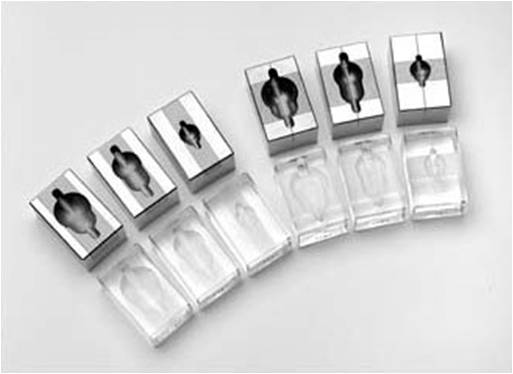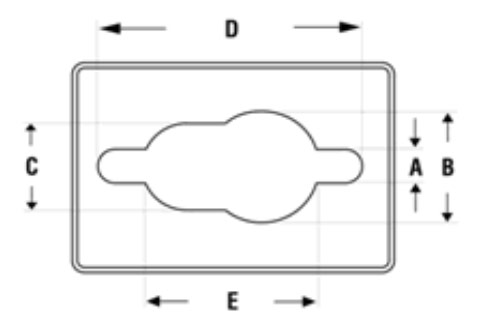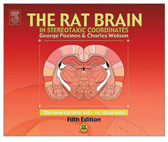Small Rat Brain Matrices, Acrylic

Brain matrices were developed to provide medical researchers with the ability to precisely prepare discrete regions in fresh or preserved tissue samples.
Acrylic brain matrices are offered as durable and economical devices to prepare your tissue samples. Acrylic matrices are not recommended for heat or cold transfer and will become brittle if cooled or frozen.
We have selected our matrices to section tissue slices to a thickness as small as approximately 1 mm, depending upon what matrix design you choose to use. Ordinary industrial razor blades are generally used to slice the brain and/or tissue material. We recommend that the cutting blade be wetted with saline to act as a lubricant before shearing the target tissue. Micron tissue punches are also available for removal of specific areas of the tissues.
The coronal RBMs have the additional feature of a mid-line sagittal cut to facilitate the splitting of the left and right hemispheres. Sections can be as fine as 1 mm.
- Repeatable slices to 1 mm providing precise blocking prior to sectioning
- For mice 175 to 300 g
Cleaning Instructions
The acrylic material cannot be autoclaved and must be chemically sterilized.
Please note: Before using any chemical solutions, make sure the solution is compatible with the acrylic material. Place a drop or two of the solution on one side of your matrix and leave for a period of time to see if the sterilant causes any harm to the matrix. If the test is to your satisfaction, you can use the sterilant of choice. After using the sterilant to bathe the matrix, immediately rinse with clean water or saline solution. Do not immerse the matrix in the disinfectant, only wash and immediately rinse for best results.
Do not use any alcohol-based products on acrylic matrices.
Table 1: Recommended Hard Surface Disinfectants
| Name | Example | Comments |
|---|---|---|
| Alcohols | 70% ethyl alcohol 70% – 99% isopropyl alcohol |
|
| Quaternary Ammonium | Roccal®, Cetylcide® |
|
| Chlorine | Sodium hypochlorite (Clorox ® 10% solution) Chlorine dioxide (Clidox®, Alcide®) |
|
| Aldehydes | Glutaraldehyde (Cidex®, Cide Wipes®) |
|
| Phenolics | Lysol®, TBQ® |
|
| Chlorhexidine | Nolvasan®, Hibiclens® |
|
Table 2: Recommended Instrument Sterilants
| Name | Examples | Comments |
|---|---|---|
| Physical: Steam Sterilization (Moist Heat) | Autoclave | Effectiveness dependent upon temperature, pressure and time (e.g., 121oC for 15 min. vs 131oC for 3 min) |
| Dry Heat | Hot Bead Sterilizer, Dry Chamber | Fast. instruments must be cooled before contacting tissue |
| Ionizing Radiation | Gamma Radiation | Requires special equipment |
| Chemical: Gas Sterilization | Ethylene Oxide |
|
| Hydrogen Peroxide | (Sterad®) | Not useful for “delicate” items |
| Chlorine (inst. must be rinsed thoroughly with sterile water) | Chlorine Dioxide (Clidox®, Alcide®) |
|
| Aldehydes (inst. must be rinsed thoroughly with sterile water) | Formaldehyde (6% sol.), Glutaraldehyde |
For all aldehydes:
|
Matrix Dimensions

- A: 3.18 mm
- B: 11.1 mm
- C: 8.73 mm
- D: 19.1 mm
- E: 12.2 mm
- Cavity Depth: 7.4 mm
Reference: The Rat Brain in Stereotaxic Coordinates

BK-0125476175
Deluxe, New Coronal Set
Author: George Paxinos, Charles Watson
Publication date: November 2004 / 209 pages / 5th Edition
The preceding editions made The Rat Brain in Stereotaxic Coordinates the second most cited book in science. Affordable, comprehensive, compact, and convenient, the Fifth Edition is expected to continue the legacy of this major neuroscience publication and be a guide to all students and scientists who study the rat brain. In this edition, for the first time since the first edition, delineations have been drawn entirely anew (on the basis of a new set of sections). Eighteen hitherto unknown nuclei are identified.
Key features:
- 161 coronal diagrams based on a single brain
- Delineations drawn entirely new from a new set of sections
- Diagrams spaced at constant 120 ìm intervals resulting in the high resolution and convenience of use
- Drawings use blue color lines and black labels to facilitate extraction of information
- The stereotaxic grid was derived using the same techniques that produced the widely praised stereotaxic grid of the previous editions
- Over 1000 structures identified, a number for the first time in this edition


